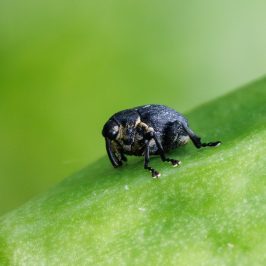I swept this harvestman out of our ornamental weeping pear this afternoon. It’s one of several Paroligolophus agrestis I found today, but wins the prize for having given me my most unusual image. I was using an old hazel log as a photographic backdrop for the less skittish of my finds – or at any rate, those that promised to be: some of them cheated and, having sat very passively in the net, went into hyperdrive as soon as I moved them onto the log, disappearing before I could even lift the camera. This little chap (or chappess, probably – though I wouldn’t swear to that in court) allowed me a handful of photos against the dark bark of the log, but then scuttled to this rough area, and settled on a surface against which it was almost perfectly camouflaged.
Respect.
Paroligolophus agrestis (a name I can barely pronounce correctly even when I have the words written down in front of me, much less remember when I don’t) is regarded as one of the most common harvestmen in the UK, and based on my extremely limited sweeping and beating experience this week, it certainly seems to be the commonest in this garden. The adult body length is around 4mm for males and 5-6mm for females, but its longest legs – the second pair – can measure up to 2cm. It’s most often found during the summer and autumn, but adults can overwinter and persist till March. Eggs are laid in late summer, and hatch the following spring.
P. agrestis can be found in a wide range of habitats, including coastal dunes, grassland, woodland, hedgerow, parkland and heathland, utilising both low vegetation and the tree canopy. The Spider and Harvestman Recording Scheme says that “it leads a bit of a ‘snakes & ladders’ life, regularly falling off or being blown out of the higher layers and climbing back up.” This amusing mental picture makes me feel less guilty about the individuals I’ve captured from our trees and tall shrubs today, then photographed and released. I imagine that to the Opiliones I’m just another of the natural hazards that regularly interrupts their arboreal existence, and I do make every effort to return them to the canopy afterwards – thus at least sparing them the return climb.
My favourite hopper of the day has gone up on my Facebook page, if you’d care to see it.







